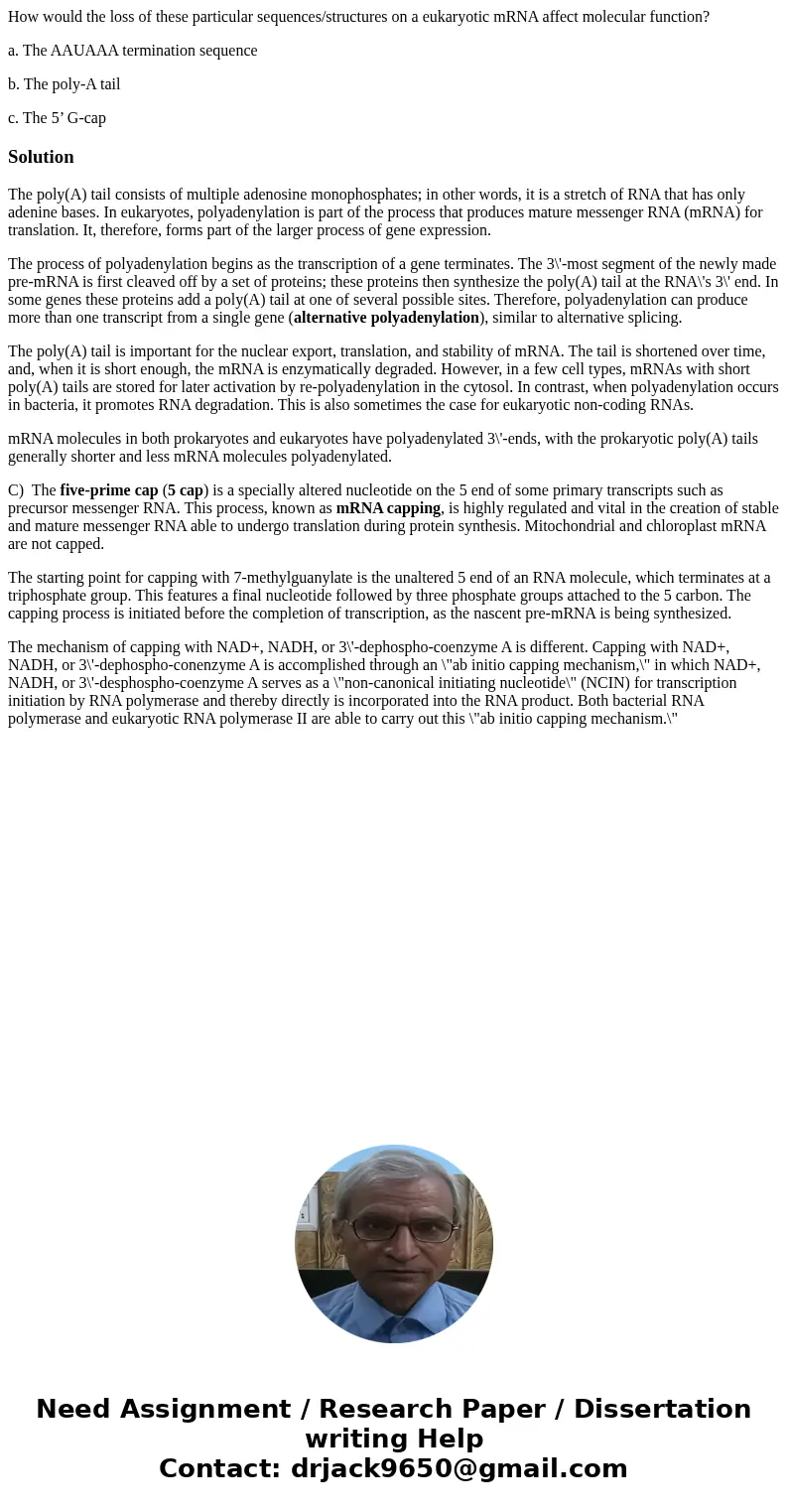How would the loss of these particular sequencesstructures o
How would the loss of these particular sequences/structures on a eukaryotic mRNA affect molecular function?
a. The AAUAAA termination sequence
b. The poly-A tail
c. The 5’ G-cap
Solution
The poly(A) tail consists of multiple adenosine monophosphates; in other words, it is a stretch of RNA that has only adenine bases. In eukaryotes, polyadenylation is part of the process that produces mature messenger RNA (mRNA) for translation. It, therefore, forms part of the larger process of gene expression.
The process of polyadenylation begins as the transcription of a gene terminates. The 3\'-most segment of the newly made pre-mRNA is first cleaved off by a set of proteins; these proteins then synthesize the poly(A) tail at the RNA\'s 3\' end. In some genes these proteins add a poly(A) tail at one of several possible sites. Therefore, polyadenylation can produce more than one transcript from a single gene (alternative polyadenylation), similar to alternative splicing.
The poly(A) tail is important for the nuclear export, translation, and stability of mRNA. The tail is shortened over time, and, when it is short enough, the mRNA is enzymatically degraded. However, in a few cell types, mRNAs with short poly(A) tails are stored for later activation by re-polyadenylation in the cytosol. In contrast, when polyadenylation occurs in bacteria, it promotes RNA degradation. This is also sometimes the case for eukaryotic non-coding RNAs.
mRNA molecules in both prokaryotes and eukaryotes have polyadenylated 3\'-ends, with the prokaryotic poly(A) tails generally shorter and less mRNA molecules polyadenylated.
C) The five-prime cap (5 cap) is a specially altered nucleotide on the 5 end of some primary transcripts such as precursor messenger RNA. This process, known as mRNA capping, is highly regulated and vital in the creation of stable and mature messenger RNA able to undergo translation during protein synthesis. Mitochondrial and chloroplast mRNA are not capped.
The starting point for capping with 7-methylguanylate is the unaltered 5 end of an RNA molecule, which terminates at a triphosphate group. This features a final nucleotide followed by three phosphate groups attached to the 5 carbon. The capping process is initiated before the completion of transcription, as the nascent pre-mRNA is being synthesized.
The mechanism of capping with NAD+, NADH, or 3\'-dephospho-coenzyme A is different. Capping with NAD+, NADH, or 3\'-dephospho-conenzyme A is accomplished through an \"ab initio capping mechanism,\" in which NAD+, NADH, or 3\'-desphospho-coenzyme A serves as a \"non-canonical initiating nucleotide\" (NCIN) for transcription initiation by RNA polymerase and thereby directly is incorporated into the RNA product. Both bacterial RNA polymerase and eukaryotic RNA polymerase II are able to carry out this \"ab initio capping mechanism.\"

 Homework Sourse
Homework Sourse